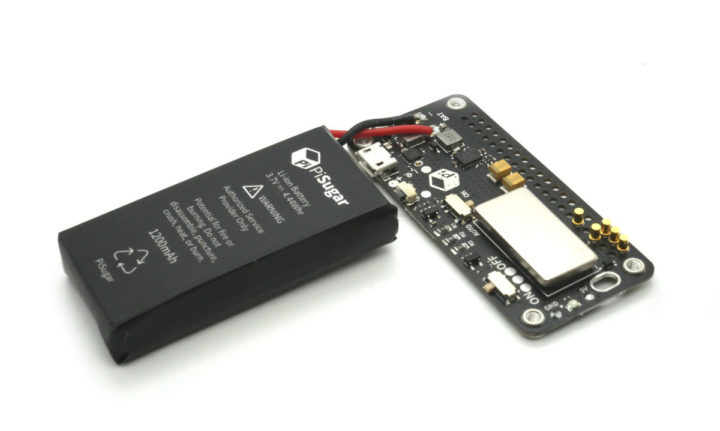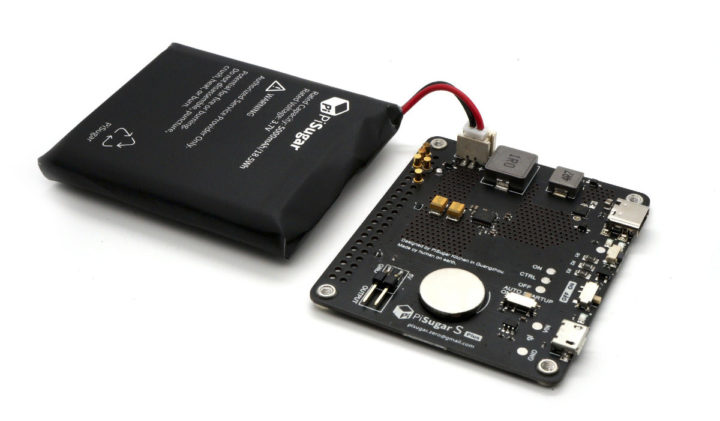PiSugar battery for the Raspberry Pi Zero was introduced around two years ago, followed the next year with a 5,000mAh PiSugar 2 battery for Raspberry Pi 3/4 which is currently sold for $49.99.
But the company has now designed lower-cost versions of the batteries with PiSugar S for Raspberry Pi Zero board, and PiSugar S Pro for Raspberry Pi 3/4 single board computers.
PiSugar S Pro – Battery for Raspberry Pi 3/4
PiSugar S Pro offers a 5,000 mAh battery capacity with up to 3A output current for a typical battery life of 8 to 10 hours. A micro USB port and a USB Type-C port can be used for charging. The board also adds a GPIO button to turn on and off the Raspberry Pi board cleanly, or alternatively can be used as a custom button when the board is running.
The battery module also supports the UPS function to continue operation when the external power supply is disconnected. The company ships the PiSugar S Pro with four screws for installation, and expansion is possible to support wireless charging and solar charging.
PiSugar S – Batter for Raspberry Pi Zero

The battery module supports the same function as its big brother with UPS, GPIO button, and the option to add solar or wireless charging via an expansion module. There’s only one Micro USB port for charging, no USB-C port.
Documentation and pricing
There’s a Wiki for all PiSugar battery modules, but there are only placeholders for the SugarPi S models, and while previous models were released under an open-source license, the company has yet to release the files for the new models.
PiSugar S Pro sells for $29.99, or $20 cheaper than the version 2 Pro model, while PiSugar S goes for $27.99, against $39.99 for the version 2 model. The main differences appear to be the lack of RTC support on the new models. You’ll find all PiSugar battery modules on Tindie.
Via Hackster.io

Jean-Luc started CNX Software in 2010 as a part-time endeavor, before quitting his job as a software engineering manager, and starting to write daily news, and reviews full time later in 2011.
Support CNX Software! Donate via cryptocurrencies, become a Patron on Patreon, or purchase goods on Amazon or Aliexpress





